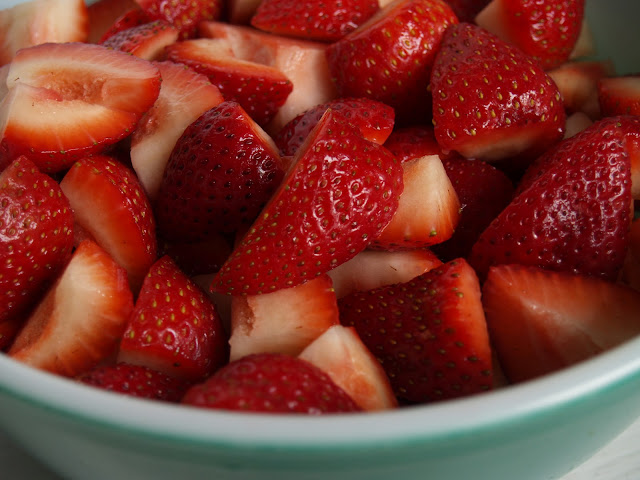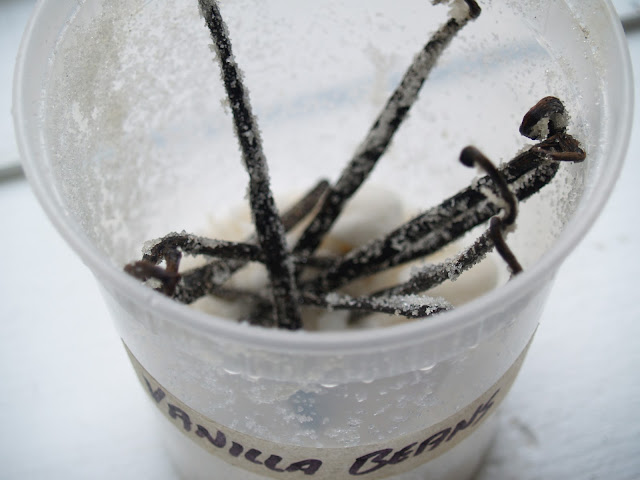Many coffee ice cream recipes call for instant coffee or brewing strong coffee or espresso and adding it to the ice cream base. In my experience, instant coffee ends up tasting like exactly what it is. It also leaves an odd film on your tongue, which is never appetizing. Adding freshly brewed coffee to the ice cream can dilute it slightly and create an icy consistency in the final product. After much consideration, I thought, why not just "brew" the coffee in the cream base from the start? This way you get to pick your favorite roast and eliminate any of those textural issues. I came across David Lebovitz's coffee ice cream (which does just that) and the rest is history.
Aaron and I are die-hard Zabar's-blend coffee drinkers (for those of you who live outside New York, Zabar's is an Upper West Side institution. It's a local gourmet food store that's been serving New Yorkers for over 70 years). It's safe to say, our mornings wouldn't be complete without a cup of Zabar's coffee. They roast their beans in-house and sell hundreds of pounds of it a day. We now have our families hooked on the stuff and they continually ask us to bring them some at every family gathering. Of course, you can use whichever bean you prefer, but naturally, I used Zabar's-blend for my ice cream. It would be sacrilege if I didn't.
COFFEE
ICE CREAM
Barely
adapted from David Lebovitz, The Perfect Scoop
Ingredients:
1½ cups
whole milk
¾ cup
sugar
1½ cups
whole coffee beans
¼ tsp.
sea salt
1½ cups
heavy cream
5 large
egg yolks
¼ tsp.
vanilla extract
¼ tsp.
finely ground coffee (pressed through a fine mesh sieve)
Combine
the milk, sugar, coffee beans, salt, and ½ cup of the heavy cream in a medium
saucepan and heat until very warm, but not boiling. Cover and remove from heat.
Let steep for at least 1 hour.
Pour
the remaining 1 cup of heavy cream into a medium size metal bowl. Place the
bowl of cream inside a larger bowl filled with a few handfuls of ice. Position
a fine mesh strainer on top of both of the bowls and set aside.
Gently
reheat the milk and coffee mixture over medium heat, stirring occasionally
(again, do
not boil). In a medium size mixing bowl,
whisk the egg yolks together. Slowly pour the heated milk and coffee mixture
into the yolks, whisking vigorously (you don't want to scramble the eggs).
Using a rubber spatula, scrape the warmed egg and cream mixture back into the
saucepan.
Cook
the mixture over medium heat, stirring constantly. As you stir, scrape the
bottom of the pan to avoid scorching. Cook until the mixture is thick enough to
coat the back of the spatula, and you're able to run your finger through it
without it running, about 10 minutes.
Once
thickened, pour the custard through the prepared strainer and stir it into the
cream. Use the spatula to press on the coffee beans in the strainer to extract
as much coffee flavor as possible. Discard the beans. Stir in the vanilla
extract and finely ground coffee. Continue stirring until cool.
Place a
sheet of plastic wrap directly on the surface of the custard and refrigerate
for several hours, preferably overnight. Process in an ice cream maker
according to the manufacturer's instructions.
Yield:
About 1 quart




















































